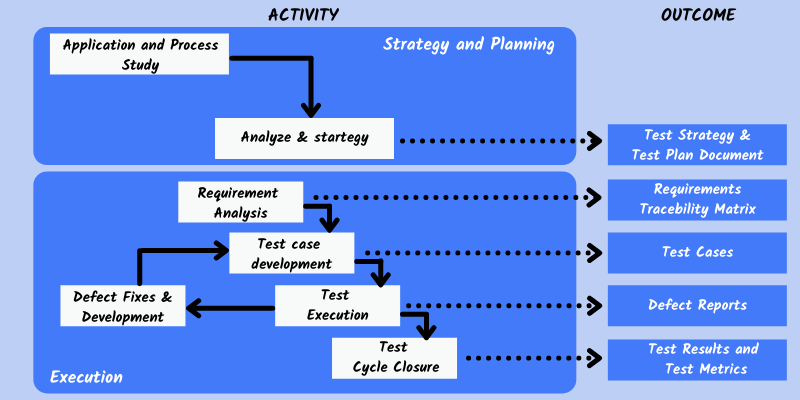

Test Plan vs. Test Strategy: What's the Difference?
source link: https://dzone.com/articles/test-plan-vs-test-strategy-whats-the-difference
Go to the source link to view the article. You can view the picture content, updated content and better typesetting reading experience. If the link is broken, please click the button below to view the snapshot at that time.
Test Plan vs. Test Strategy: What's the Difference?
As software testers, we should be aware of these 2 phrases, as they are critical in testing software applications. We will learn about Test Plans and Test Strategies.
Join the DZone community and get the full member experience.
Join For FreeIn the process of testing a software application, test plans and test strategies are quite crucial. A strong test plan and strategy will always prevent errors in the application.
As software testers, we should be aware of these 2 phrases, as they are critical in testing software applications. We will learn about Test Plans and Test Strategies in this article.
What Is a Test Plan?
A Test Plan is a document that contains all of the necessary information and is used to test software applications. The test lead or testing team defines a test plan as a deliverable.
All QA-related activities, such as defining the scope of the project, related roles and duties, test objectives, entrance and exit criteria for testing, and all connected risks that we may face while testing an application, can be included in a test plan.
When any of the team members are replaced by other testers for whatever reason, the test plan will be based on the requirements acquired by a stockholder and can be used by other testers or team members. By using this document, a tester will be able to understand the requirements and collect all related information that can be used to test a software application.
If, for example, a module 1 is to be tested by "Tester A," but "Tester A" is replaced for any reason, "Tester B" can collect information and proceed to test the application using a test plan, saving time and providing a better understanding of application testing.
What Is a Test Strategy?
The basic purpose of a test strategy is to define the testing process. It defines all related information about testing, such as what tool we will use to test the software application, what modules will be tested while testing the application, how much time will be required to test each module, and how many resources will be required to test each module. It also covers what strategy we will use to test the application, including information about high-level design, test planning, how much time will be required to test each module, etc.
A Test Strategy should include the following sections:
- Project Overview: This is the first item that creates test strategies; project overview always plays a big role in test strategies since it describes the project's needs and objectives.
- Requirement Scope: Requirement scope determines the application and functional scope of a project.
- High-Level Test Plan: A test strategy describes the test scope of a software application, whereas a test scope defines the application's in and out scope.
- Test Approach: It is used by the testing team to test the application will be defined in this section.

The test approach is divided into sections in the picture above:
- Planning and strategy.
- Test Execution: The overall program's test strategy and test planning phases will be completed only once, and test execution will be repeated after each cycle.
- Test Coverage: The method used by QA to optimize the coverage of functional requirements in test cases and test scenarios is referred to as test coverage. Requirement The traceability matrix, which maps each requirement to a test scenario and test case, is an example of test coverage.
- Test Environment: The test environment specifies the set of software and hardware that will be used to evaluate our application.
- QA Deliverables and Metrics: Each phase produces a unique deliverable, such as a software requirement specification, a requirement traceability matrix, a test case document, a bug report, and so on. It's a tool that may be used to test software.
Defect Management: It establishes the strategies for defect management.
Conclusion
All modules are described with the associated tester and test cycle number who tested a module in the Test Plan, so if a module fails in a specific cycle, we can quickly check the corresponding cycle and see if the specified module was passed or failed. If there was a failure, we can correct it.
Because there are some standards in place, the test strategy can't be modified regularly. The quality of testing is affected by test strategies, and good test planning and methods lead to product quality.
Recommend
About Joyk
Aggregate valuable and interesting links.
Joyk means Joy of geeK